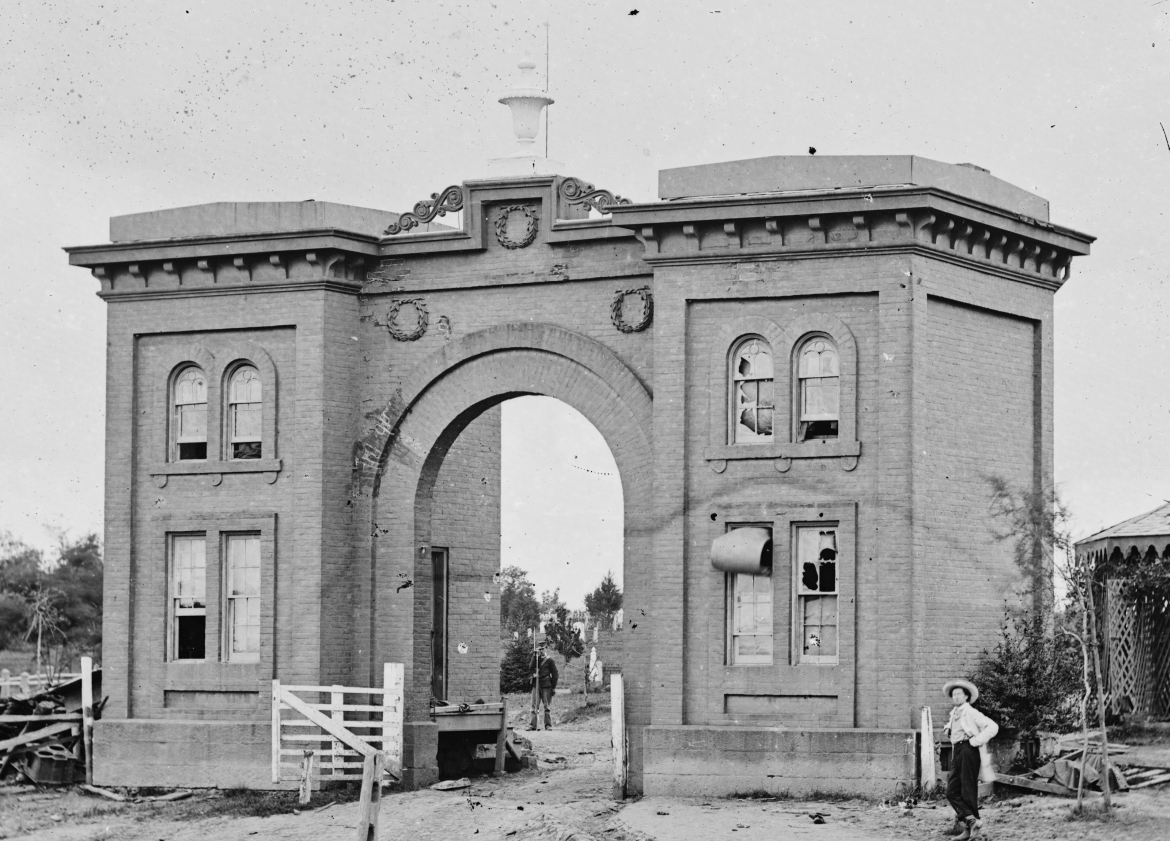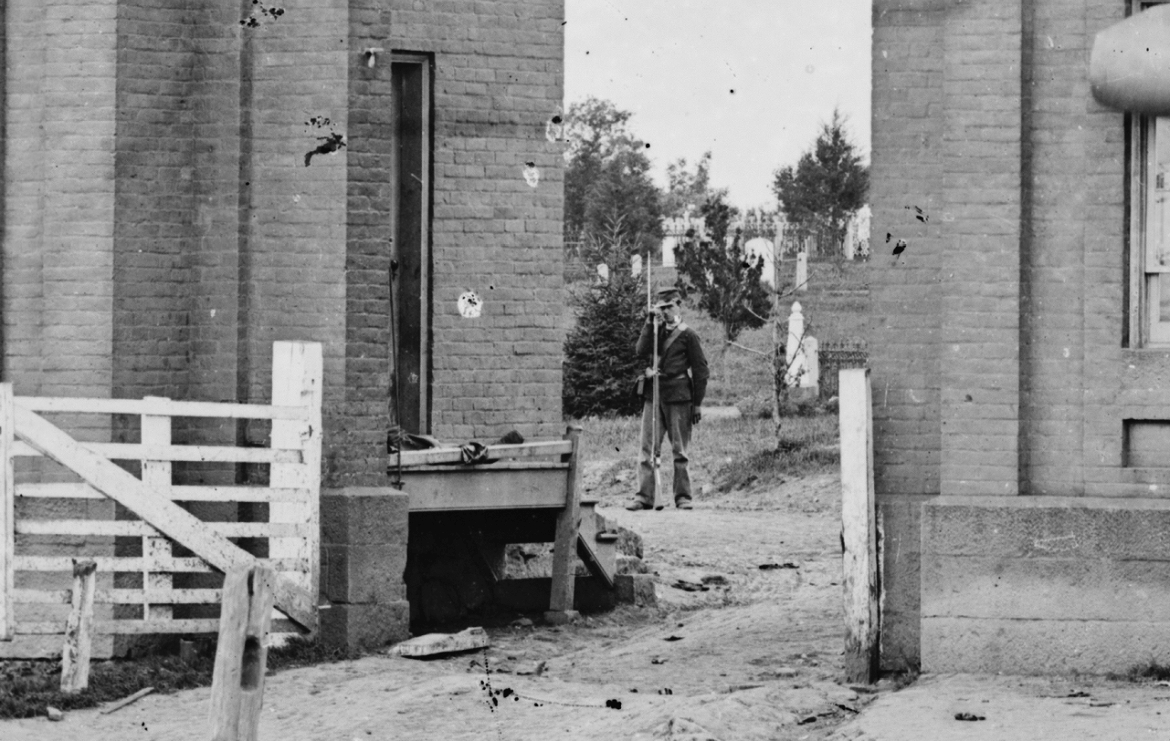Only hours after remaining units of the Army of the Potomac had left Gettysburg, Alexander Gardner’s photography crew recorded this view of the Evergreen Cemetery Gatehouse on July 7, 1863. The photograph provides one of the most detailed views of the original artillery lunettes for the batteries on East Cemetery Hill. The guns situated behind these lunettes (the mounds of earth in the foreground) would have belonged to Stewart’s Battery B, 4th United States. Within only a few years following the battle, these lunettes were mostly gone (due to either removal, erosion, or both). An effort to approximate their locations and rebuild them was made in 1873. Also noticeable in this print are the mud puddles around the lunettes from recent rain.This image was taken facing southwest on Tuesday, July 7, 1863 by one of Gardner’s assistants, Timothy O’Sullivan (print by Alexander Gardner) [LOC].
The wagon in the foreground probably belonged to some of the first visitors to the battlefield. July 7th was also the same day that Elizabeth Thorn and her family returned to the gatehouse. The house was uninhabitable and burial crews from the hospital corps erected a tent nearby for the family to stay in. Thorn was six months pregnant at the time of the battle. LBG Deb Novotny tells us what happened to her baby.This image was taken facing southwest on Tuesday, July 7, 1863 by one of Gardner’s assistants, Timothy O’Sullivan (print by Alexander Gardner) [LOC].
Colonel Charles S. Wainright described the reason for construction of the artillery lunettes on the night of July 1, 1863: “At dusk, no attack having been made, the batteries on the hill outside the cemetery gate were posted […] and light earthworks thrown up in front of each gun to protect the men from the fire of the enemy’s sharpshooters [in town].” This was also supported by Brigadier General Henry Hunt (Chief of Artillery for the Army of the Potomac): “[Each battery had] a small earthwork thrown up in its front, to afford a partial shelter from the fire of the enemy’s sharpshooters.”This image was taken facing southwest on Tuesday, July 7, 1863 by one of Gardner’s assistants, Timothy O’Sullivan (print by Alexander Gardner) [LOC].
Mathew Brady’s crew arrived about a week after Gardner. There was considerably less activity at the cemetery gatehouse.This image was taken facing southwest circa July 15, 1863, by Mathew Brady and Co. [LOC]
Let’s look closer. In the bottom right…This image was taken facing southwest circa July 15, 1863, by Mathew Brady and Co. [LOC]
…Appears one of Brady’s assistants, striking a pose next to the sidewalk.This image was taken facing southwest circa July 15, 1863, by Mathew Brady and Co. [LOC]
Because the Library of Congress has made high-resolution scans of photographic negatives available to the public, we’re finally able to see in detail the presence of this militiaman, posing inside the cemetery gate. Pennsylvania militiamen were camped on East Cemetery Hill and were tasked with burial duty, as well as guarding Gettysburg.This image was taken facing southwest circa July 15, 1863, by Mathew Brady and Co. [LOC]
The man’s right hand rests on the top of his rifle as he poses for the photograph.More information on these photographs can be found in historian William A. Frassanito’s Gettysburg: A Journey in Time and Early Photography at Gettysburg.This image was taken facing southwest circa July 15, 1863, by Mathew Brady and Co. [LOC]








